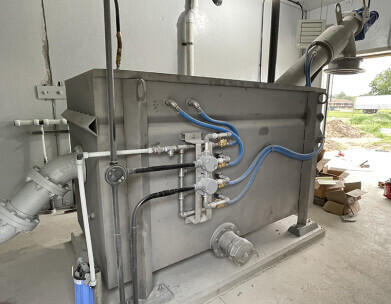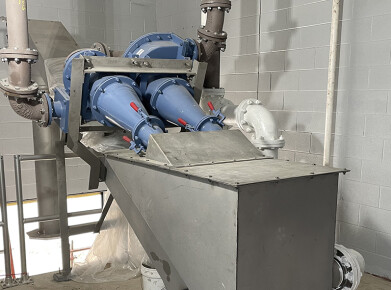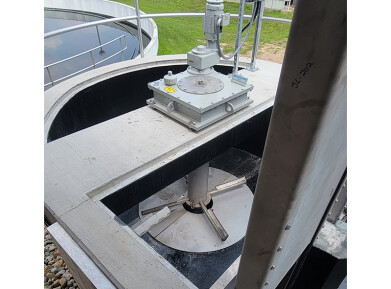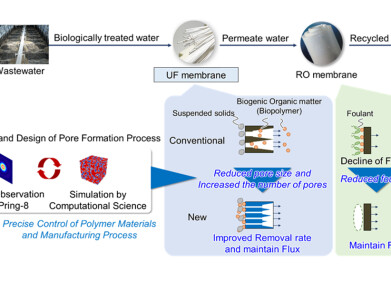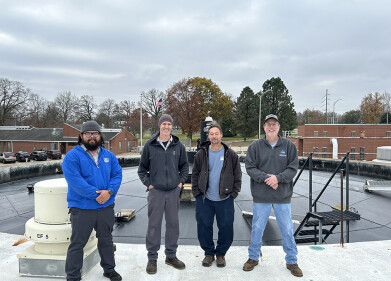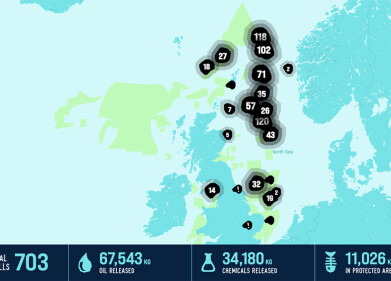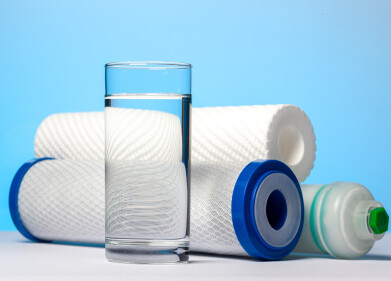Water/Wastewater
New grit removal installation helps Resource Recovery Facility
Jun 17 2024
At a Water Resource Recovery Facility (WRRF), dealing with sewage overspills on the floor and overhead was an unpleasant start to the day. Previously, septage brought by haulers was dumped into a six-inch pipe leading directly into the city’s main influent line. This setup often caused the old bar screen and washer compactor to back up, leading to monthly overspills. Additionally, abrasive grit frequently caused leaks, resulting in small waterfalls in the pipes above the facility's old garage/service building, occasionally showering staff with wastewater.
Fortunately, after a three-and-a-half-year, two-phase upgrade, the dedicated team of operators now enjoys much better starts to their day. While challenges are a part of daily operations at all treatment facilities, the installation of new grit-removal equipment and a Septage Acceptance Plant has eliminated these unpleasant episodes at this busy plant.
Previously, high-strength, sometimes shock-loading septage presented ongoing issues, balancing the useful income from septage intake against the time, cost, and labour required for treatment. The old infrastructure also had a negative impact on downstream equipment and risked potential violations. With the WRRF originally built in the 1950s and an upgrade in the early 1980s introducing a grit chamber, it was time for significant improvements.
Dan Widdel, Vice President of Lakeside Equipment Corporation (Bartlett, IL), explained, “We work closely with operators who strive to maintain their facility, but sometimes, despite their best efforts, it can become a losing battle. The age of the equipment and increasing septage flows made maintenance very intensive.”
The City issued an RFP (Request For Proposal) for the project design, which was awarded to a local engineering and environmental sciences firm. The new design included two new grit channels, new vortex-style grit removal equipment, and a new septage acceptance plant. Lakeside Equipment Corporation won the contract for this equipment through a public bid from DuBois-Cooper Associates, who coordinated with contractors and facility staff to install Lakeside’s Spiragrit Vortex Grit Removal System and Raptor Septage Acceptance Plant (SAP).
“Despite the tough applications,” continued Widdel, “our customers expect at least 20 years of service from our equipment, along with a significant reduction in maintenance hours. The operators were confident with DuBois Cooper’s recommendation, based on many successful Lakeside installations across North America.”
The facility now sees a 17% annual increase in incoming septage. Previously, the facility lacked a comprehensive metering system, relying on time-consuming handwritten load tickets. The new system uses cards assigned to each company, which are swiped to gain access. Haulers simply hit start and stop buttons to unload, with the new station providing administration capabilities to track and invoice customers. This has freed up significant amounts of time, and there are plans to extend access to 24/7.
Maintenance costs have reduced by around 35%, and the new computerized operation, though requiring a small learning curve, offers substantial benefits. The Lakeside septage and grit systems also help protect downstream equipment. The Raptor Fine Screen at the heart of the SAP compacts and dewaters captured screenings to a solids content of 40%, preventing plugging and blinding from grease and debris, allowing faster unloading times and generating more revenue.
A new building now houses the screening removal process, protecting operators from the elements and reducing their exposure to hazards. The facility’s redundancy with two units ensures continuous flow even if one unit is offline. The two Lakeside SpiraGrits effectively remove inorganic grit from the WRRF in a mechanically-induced vortex environment, where rotating paddles maintain flow velocity, keeping organics in suspension while heavier grit settles and is transported for disposal.
“The facility previously had a single tank on the side of an old building with a pump that often failed, forcing operators to navigate through streams of sewage to shut down the system,” said Widdel. “Now, they have two separate tanks, all in one. The mechanical equipment is no longer housed on the second floor and can be shut off before encountering any surprises.”
The upgrade has increased the facility’s capacity from four million gallons to seven million gallons, eliminating the need for energy-hungry blowers. The WRRF, which also receives effluent from a local tannery and brewery, is now better equipped to handle nutrient-rich wastewater and manage shock-loads with a new holding tank that allows for gradual feeding.
The Industrial Pretreatment Program (IPP) is adapting to new challenges, such as the influx of effluent from a growing number of marijuana production companies. Operators regularly visit these facilities to monitor their impact on the WRRF.
Overall, the upgrade has significantly improved the biological process at the facility, easing nutrient loading challenges throughout the year. The operators, dedicated stewards of the environment, ensure the facility’s positive impact on the local river, benefiting the community who enjoy fishing, kayaking, and wildlife.
Events
Mar 18 2025 Expo Santa Fe, Mexico
Mar 18 2025 Moscow, Russia
Mar 19 2025 Manila, Philippines
Mar 20 2025 Guangzhou, China
Mar 24 2025 National Harbour, MD, USA
